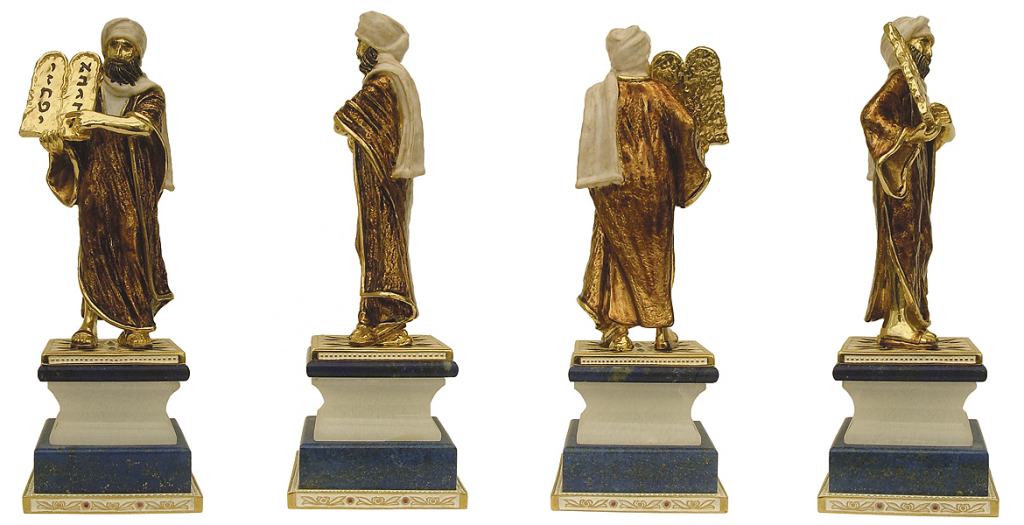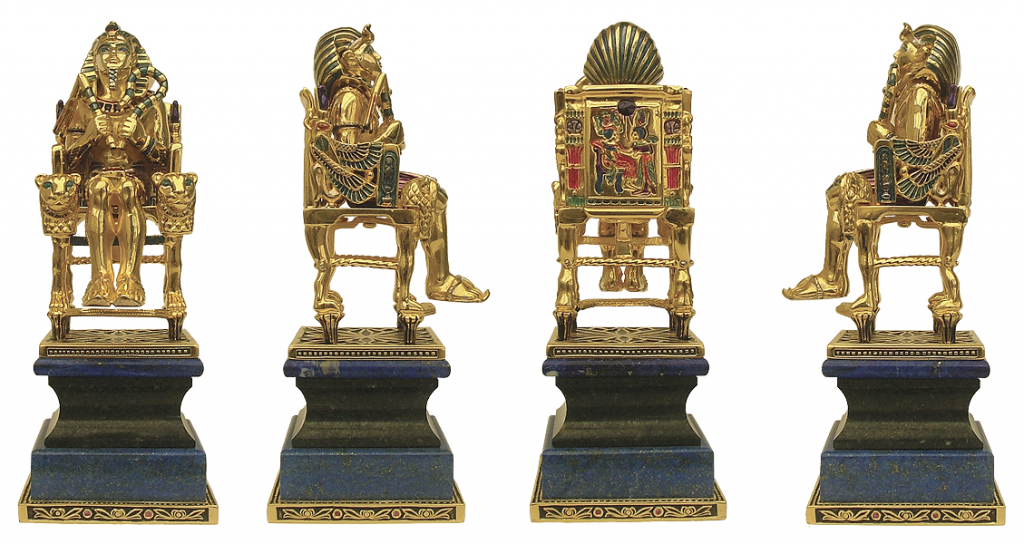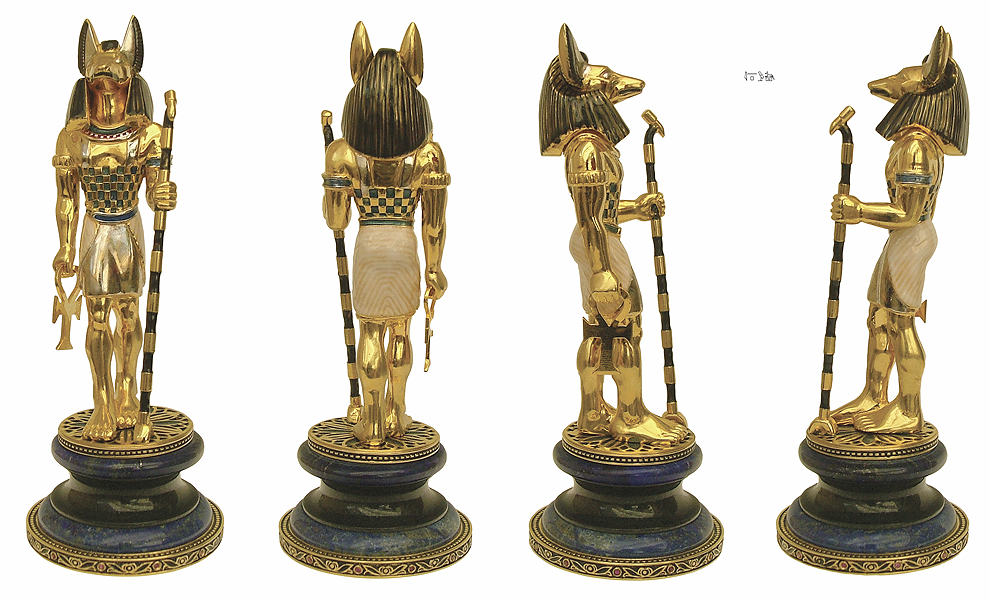“Exodus from Egypt” Chess Set
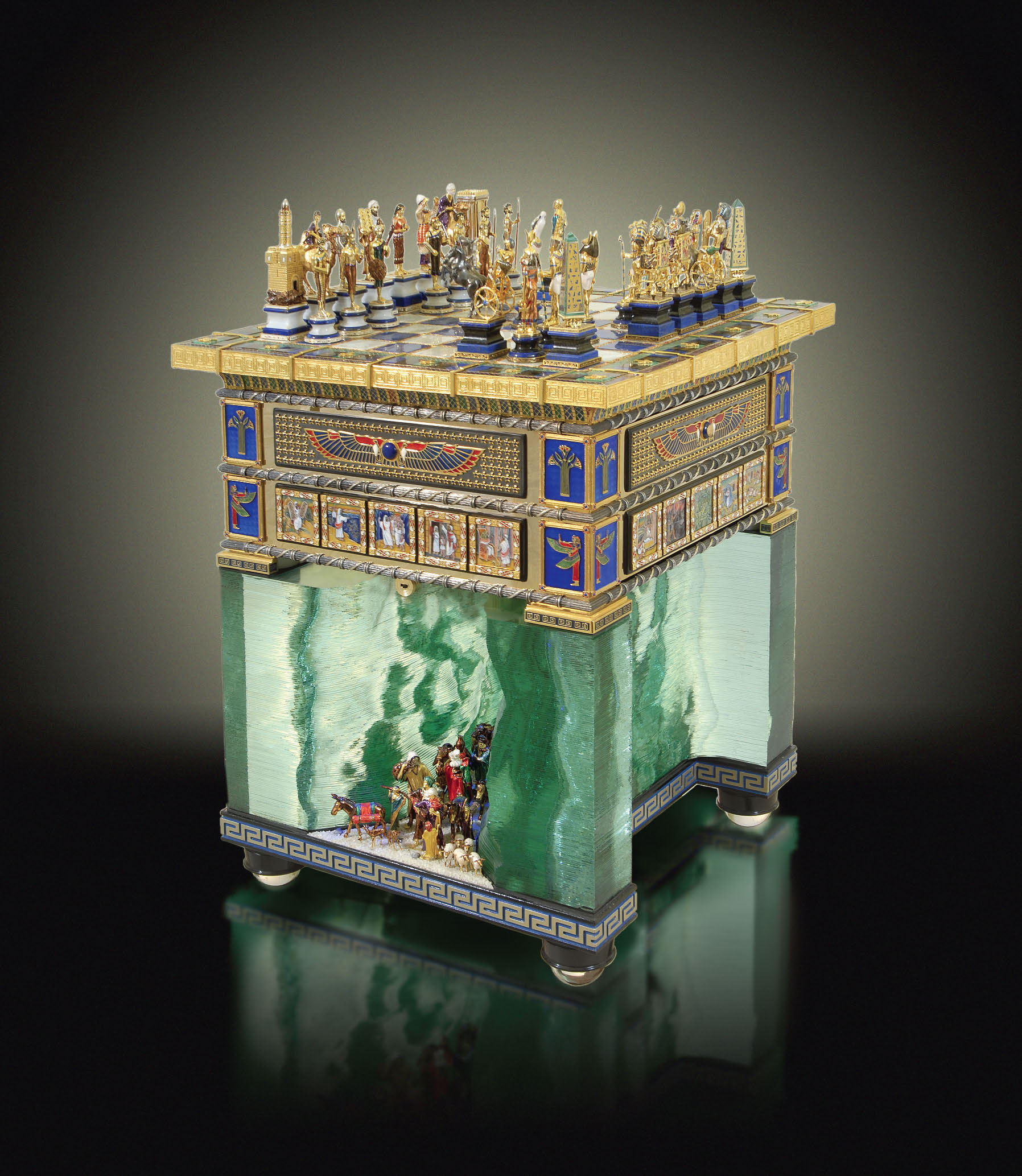
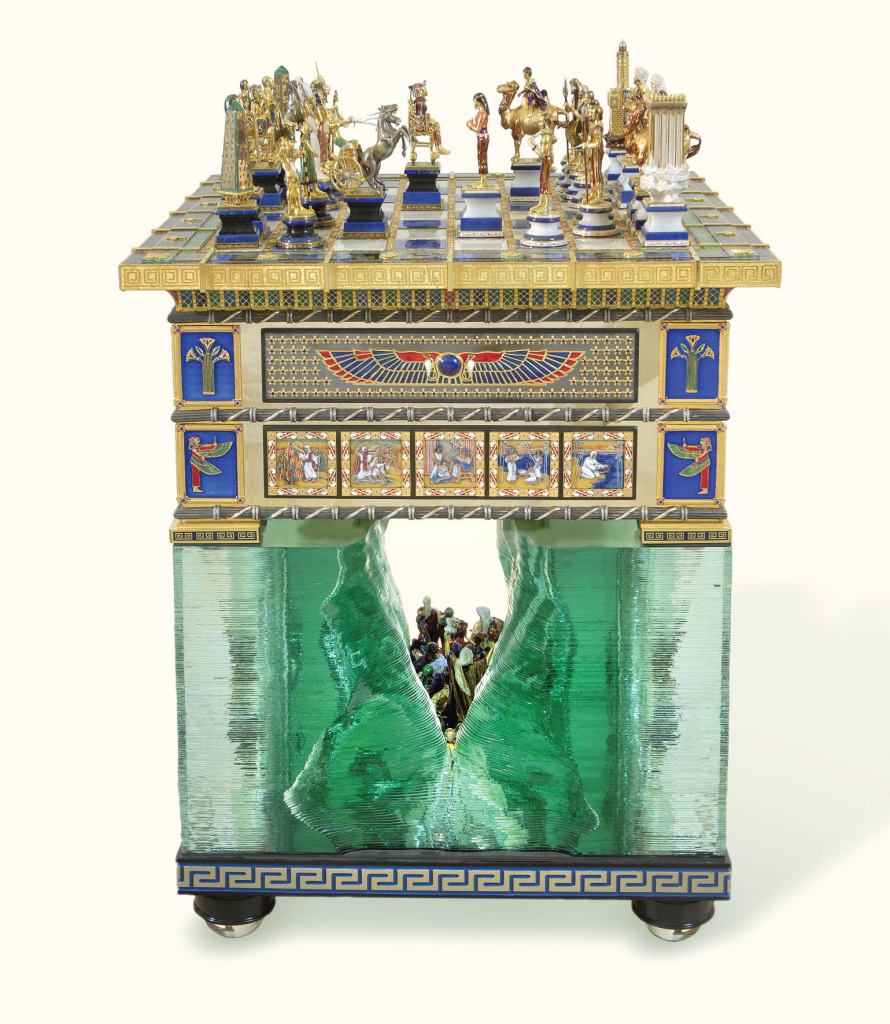
This chess set evokes the kind of emotion Howard Carter experienced
when he illuminated the antechamber of Tutankhamun’s burial hall with
a lantern inserted through a hole. “There were rows of animals, statues,
and gold – gold glittering everywhere!” he recalled with great emotion.
Starting from mid-19th century, the generally accepted standard chess design was
based on drawings by Nathaniel Cook. It was named the “Staunton Chess Set” after
Howard Staunton, the most famous European chess player of the time. The world of
chess divided into two: the game that we play and the chess sets that play with our
esthetic feeling and our love of things unusual, rare, beautiful, and exotic….
The “Exodus from Egypt” chess set created by Yaakov Davidoff belongs
to the world of art; it is one of those esthetic objects that surprises us
by their author’s richness of imagination and level of craftsmanship.
Harmony between the three components – design, jeweler’s art, and
miniature sculpture – helps reveal the theme of this work of art. The
theme chosen by the artist places his work in the realm of Judaica,
contemporary artistic culture, and Jewish tradition.
Davidoff’s work is unique and has no parallel in the monumentality of its form, detailed
descriptive representation of the subject, decorative effect of materials,
and original composition.
Yaakov Davidoff developed the idea of creating a chess set based on a historic motif as early as 1995, after he saw the sketches drawn by his friend, artist Ruslan Spivak, the sketchesreflected Spivak’s vivid interest in the archeology of the Ancient Middle East.
By that time Yaakov Davidoff had acquired extensive experience in creating Judaica and he, too, was interested in history, especially in the history of Ancient Egypt. After a while, a shared quest led them to combining Judaism and ancient history into one theme – the Exodus from Egypt.
From then on, the work acquired aim and focus. After determining the size of the pieces, the proportions of the entire set became clear. However, numerous elements of its architecture (and Davidoff’s chess set can definitely be classified as a small-scale architectural form) were later determined in greater detail during the course of the design, selection of materials and techniques of implementation.
This artistically and technologically complex piece was created within a period of about two years. Significantly, the completion of work coincided with the Passover holiday of 2007. This coincidence and the fact that the set has been created in Jerusalem add symbolic meaning to the set as an object of Judaica.
The Jewish Soldiers
The game function of the figures corresponds to their historic role. The Israelite camp is headed by Moses. The role of the “queen” is played by Tzippora, Moses’s wife.To the left of Tzippora stands Aharon, Moses’s older brother. His vestments of High Priest are reconstructed literally according to the biblical description. Joshua bin Nun, an important figure in Jewish history, stands to the right of Moses. A military leader and a prophet, Moses’s companion. Other figueres are also related and represents many aspects of the Exudos story.
The first row of the “whites” consists of eight figures of anonymous Jewish foot soldiers armed with period weaponry. Without specifying where slaves could have availed themselves of weapons, the Torah says: “… and the children of Israel went up armed out of the land of Egypt” (Exodus 13:18). Having carefully studied the archeological data, the artist creates historically faithful representations of armed foot soldiers. The left flank is protected by a warrior armed with a cudgel and a shield. A green tunic fastened on one shoulder covers his thighs down to below his knees.
The Egyptian Soldiers
On the opposite side of the game field are the pursuers – Pharaoh’s army. Visually they are very different from the “whites” – more colorful, textured, detailed, and dynamic. The reason for this is that the archeology of Ancient Egypt has provided vast sources of material, the sheer quantity of which requires limitation rather than further research. Tutankhamun’s tomb single-handedly can satiate the interest of anyone looking for historic material for inspiration.
Pharaoh and his army are at the back. The rightmost square of the first line is occupied by Anubis. He is represented as a human figure with the head of a dog or a jackal. Next to Anubis stands the goddess Isis, recognized by her headdress in the form of the solar disk framed by cow’s horns. She is the spouse and sister of Osiris and embodies marital fidelity and motherhood. other symbolic Egyptian simbols represents the other peices, while The first line (pawns) consists of eight most powerful representatives of the rich pantheon of Ancient Egyptian gods.

